Audi has introduced a new nomenclature for the power output designations of all of its models, beginning with the latest A8. According to the carmaker, the designations are said to take effect worldwide for all drive types, and has already been introduced in Thailand.
The new designations stand for the specific power output, and apply both to cars with combustion engines and to e-tron models (with hybrid and electric powertrains). The designations help to classify the model range into different performance levels, identified by a two-numeral combination.
For instance, ‘30’ will appear on the rear of all models with power output between 109 and 129 hp (81 and 96 kW), while ‘45’ is for power outputs of between 227 and 248 hp (169 and 185 kW). The top of the Audi model range is the performance class above 536 hp (400 kW), which takes the numeral combination ‘70’. These numerals are followed by the engine technology – TFSI, TDI, g-tron or e-tron.
These number combinations progress in increments of five (i.e. 30, 35, 40, 45, etc.), and they represent the hierarchy within both the respective model series and the brand’s overall model range.
Following the new nomenclature, the spectrum will range from the Audi Q2 30 TFSI with 114 hp (85 kW) to the Audi Q7 50 TDI with 268 hp (200 kW). However, Audi’s S and RS models as well as the R8, will retain their classic names in reference to their top position in the model range (special treatment).
As mentioned earlier, the new A8 will be first to adopt the new nomenclature, where the A8 50 TDI is for the model fitted with the 3.0 litre turbodiesel V6 diesel engine with 282 hp (210 kW). The other variant, the A8 55 TFSI comes with a 3.0 litre turbo V6 petrol unit with 335 hp (250 kW).
If it all sounds confusing, don’t worry! Here’s a nice list (from Autocar UK) for you to get better acquainted with Audi’s new nomenclature:
- 30 for models with between 81 and 96 kW (109 and 129 hp)
- 35 for models with between 110 and 120 kW (148 and 161 hp)
- 40 for models with between 125 and 150 kW (168 and 201 hp)
- 45 for models with between 169 and 185 kW (227 and 248 hp)
- 50 for models with between 210 and 230 kW (282 and 308 hp)
- 55 for models with between 245 and 275 kW (329 and 369 hp)
- 60 for models with between 320 and 340 kW (429 and 456 hp)
- 70 for models with more than 400 kW (536 hp)
Looking to sell your car? Sell it with Carro.

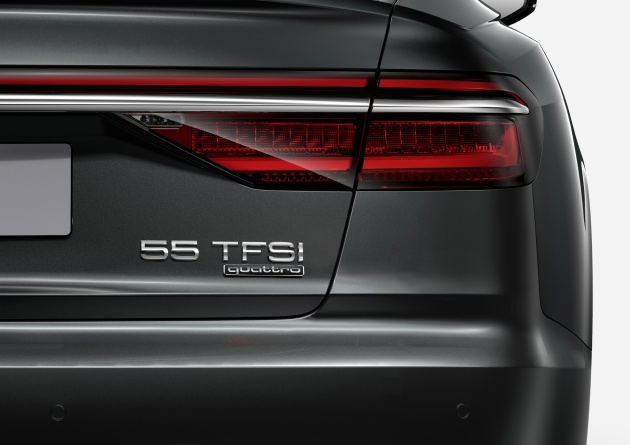


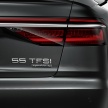
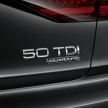
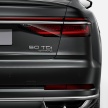
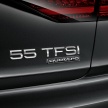
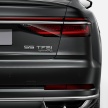























So an Audi 100 from the early 90s would easily be in hypercar territory. Not.
Lucky Audi did not put the words Onz. Cause Betul betul Onz means super powerful.
Your comment is not funny, it unleashes how stupiak you are
Forgip the caveman for he knows not his stupiadity.
No, just shows how much malice he has for fellow malaysians.
audi 200 will be god level?
This will konfius DRB Audi salesman even more. Oh wai
RM126K Audi A6 2.0HYBRID macam great deal.
Starts designating power output by using KW(kilowatts) instead of hp(horse-power). Besides, up until now no vehicle manufacturers designated there vehicle by torque numbers…
VW already did
https://paultan.org/2014/12/09/volkswagen-new-torque-based-engine-labelling/
I believe VW is doing that recently (designation roughly based on torque number):
Passat 380 TSI = Passat 2.0L with 350 Nm
Passat 280 TSI = Passat 1.8L with 250 Nm
Jetta 280 TSI = Jetta 1.4L with 250 Nm
Seems like a better way of telling how powerful a car is but it isn’t. While it’s true a 3.0L V6 would mean the engine is huge, 335hp isn’t really a great deal of power to weight ratio. The best standardized way to show how powerful a car is would be in the ratio of Nm : Curbweight. So a car with 1:1 would be insanely quick, whereas 1:10 would mean it’s painfully slow.
Koenigsegg alredi booked that naming
Stupid idea
Over engineered German.
They could simply use “adequate” (or “fast”) to differentiate all high hp variants. Its easier for me to understand.
soo confusing